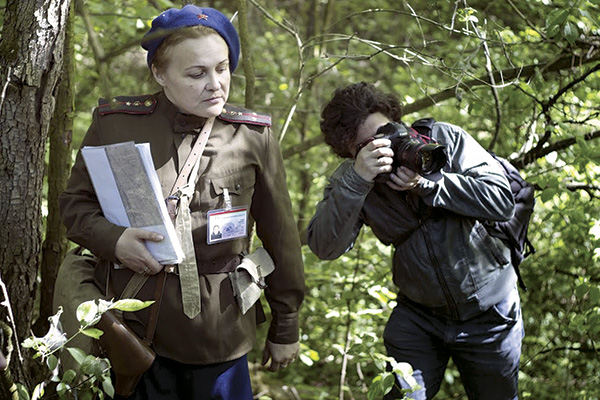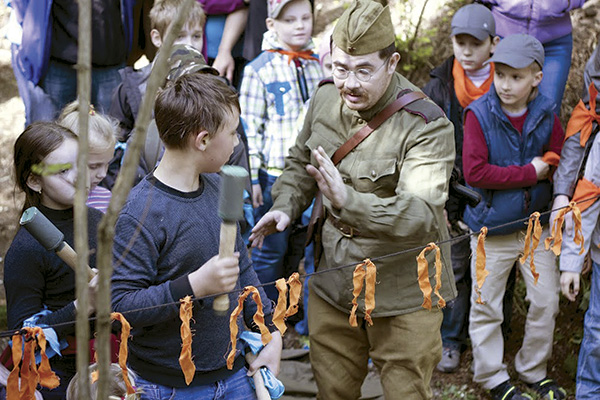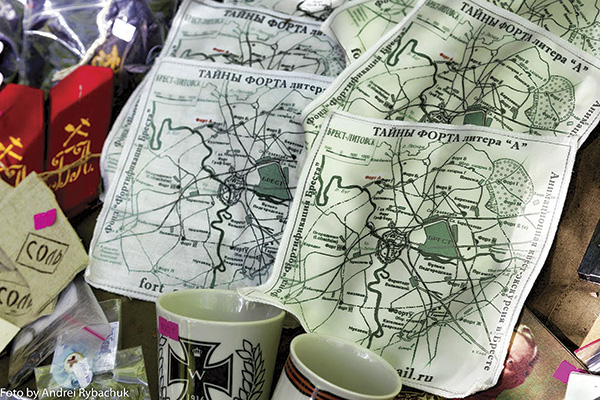Another fort within Brest Fortress to open to tourists
Hundreds of thousands of tourists visit Brest Hero-Fortress annually. Gradually, the site is being restored, enabling it to open up more and more to visitors. Brest architects Alexander Zharkov and Andrey Vorobey have now `opened` a forgotten fort, marked by the letter A.

Alexander Zharkov regrets that unique Brest Fortress is so little explored. He notes that only Fort Number V is available to tourists. He tells us, “There’s a museum. In the spring, we began the `Fortification of Brest` fund, as well as developing tourist routes and certifying guides. Why Fort A? It’s a unique construction from 1912-1915. After the war, it was used by our missile-men. It would be wonderful to create a museum there. We have so many materials from the First World War, the Second World War, and from the Soviet period. We have a great deal to show.”
Looking back at the last century, why did people construct forts? Brest-Litovsk Fortress was already falling into ruin by the second half of the 19th century. Its stage-by-stage reconstruction began in the second half of the 1860s. Nine earth-brick forts had been constructed around the fortress by 1888, creating a 30km defensive line. A new layout for development was approved in 1911, comprising 11 new forts. Each was named by letter, about 6-7km apart.
By the spring of 1915, the fortress had acquired its finished appearance, and become one of the better-fitted in the Russian Empire. However, it almost did not take part in combat operations during the First World War.
Some forts have been destroyed, replaced by industrial and housing estates; others were retroceded to Poland after the Second World War. Some remain today, so why not to show them to tourists? The Rubezh war-historical club and Fortification of Brest fund have been set up, and Alexander Zharkov and Andrey Vorobey are leading in this business.

I recently took a tour of Fort A. In order to attract people, we need to make sure that people have access to as much as possible. Our guide split us into two groups, giving us tasks to complete. On the barricades, we looked for fragments of a map of Brest-Litovsk fortresses, from 1907, and solved riddles. We were surprised to find out that mines were deactivated during the First World War. Then, together, we released a captive. From the First World War, we passed through to the days of the Polish-Soviet War, then to the Great Patriotic War. Near a semi-caponier, we inspected old demolition works and captured a German! Next followed the liberation of Belarus, and then the Cold War. Finally, we practiced grenade throwing, before buying souvenirs.
Our excursion lasted two and a half hours, during which time our guides secretly changed clothes several times, donning the uniforms of various periods of time.
Alexander Zharkov hopes that running excursions will help pay for fort preservation. He notes, “There was a time when extreme sports lovers used quad bikes here. Others came to dig (illegally) and, in summer, would dump old home appliances around the site. We used a subbotnik (voluntary unpaid work day) to clear the site and collect rubbish. The fort has huge potential. We could organise not only adventure games but simple sightseeing, cycling and ecological excursions.”

Republican wildlife preserve Barbastella is located nearby, and is home to Europe’s largest gathering of over-wintering bats. After the withdrawal of the Soviet Army sub-units, a cave microclimate was created in the abandoned buildings, with up to 95 percent humidity and temperatures of 1-5 degrees above the exterior norm. From November until March, over 2,500 bats gather there, including some listed in the Red book.
Alexander Zharkov tells us that the nature protection department has been notified about planned fort excursions. He explains, “We’ve received all approvals and have detailed the precise route. It’s good that we have a bat wildlife reserve here. There are also 31 species of mammals, about 100 species of birds, including halcyons and green woodpeckers, two species of reptile and eight amphibian species. Can you imagine?”
By Valentina Kozlovich











